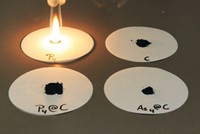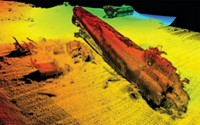Advertisement
Grab your lab coat. Let's get started
Welcome!
Welcome!
Create an account below to get 6 C&EN articles per month, receive newsletters and more - all free.
It seems this is your first time logging in online. Please enter the following information to continue.
As an ACS member you automatically get access to this site. All we need is few more details to create your reading experience.
Not you? Sign in with a different account.
Not you? Sign in with a different account.
ERROR 1
ERROR 1
ERROR 2
ERROR 2
ERROR 2
ERROR 2
ERROR 2
Password and Confirm password must match.
If you have an ACS member number, please enter it here so we can link this account to your membership. (optional)
ERROR 2
ACS values your privacy. By submitting your information, you are gaining access to C&EN and subscribing to our weekly newsletter. We use the information you provide to make your reading experience better, and we will never sell your data to third party members.
Environment
Toxic Vanadium In Hungarian Red Mud
Industrial Disasters: Scientists discover presence of bioavailable vanadium in mine tailing mud
by Sarah Everts
February 24, 2012

In October 2010, toxic red mud poured from an alumina tailings reservoir into the Hungarian countryside. Now researchers report that the mud contained toxic vanadium in a chemical form, V5+ , that plants and animals could absorb (Environ. Sci. Technol., DOI: 10.1021/es3003475).
The spill, which killed 10 people, is one of Hungary’s worst environmental catastrophes. Some 700,000 m3 of highly alkaline red mud poured over 40 km2 of the Hungarian landscape, emitting radiation, and spreading toxic trace metals.
Ian T. Burke, an environmental scientist at University of Leeds, in the U.K., led a team of researchers that took a closer look at three of those elements: arsenic, chromium, and vanadium. The scientists picked those three because they are among the most hazardous in the red mud, Burke says.
Using extended X-ray absorption spectroscopy (XAS), the researchers analyzed the chemical valence state and molecular coordination of elements in samples of the red mud. “One of the advantages of XAS is that you can analyze small concentrations of an element in a complex matrix like red mud”, Burke says. But he points out that the method can’t detect all possible bioavailable toxic metals, such as cadmium and nickel.
The researchers found that arsenic and chromium were not in bioavailable states. But vanadium, which received less attention in media reports than the other metals, was in the bioavailable V5+ state. Burke says that it “may pose the biggest hazard.”
The data partially justify the cleanup response by Hungarian officials, he adds. Compared to the less expensive route of plowing the mud into the topsoil, the decision to remove large swaths of the red mud from the countryside probably led to less bioavailable vanadium in the soil, Burke says.





Join the conversation
Contact the reporter
Submit a Letter to the Editor for publication
Engage with us on Twitter